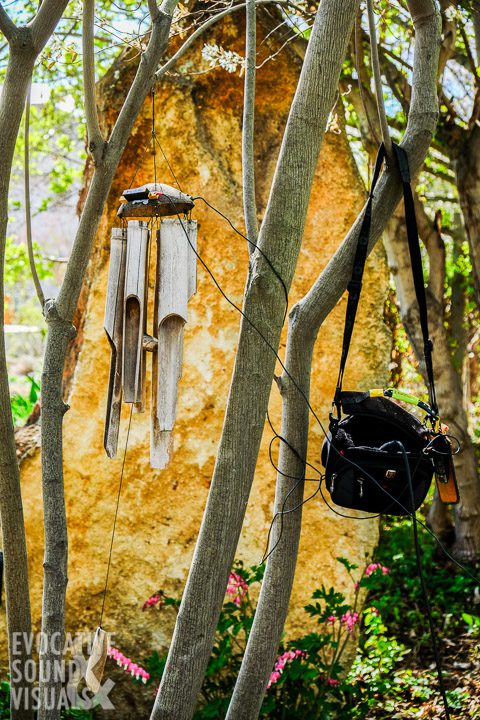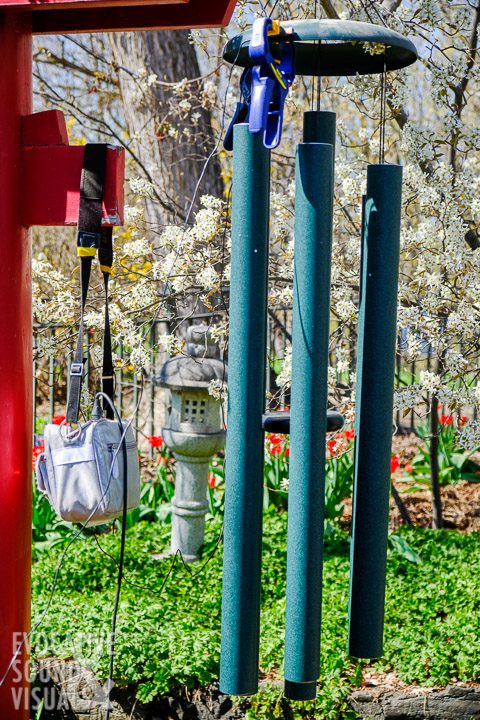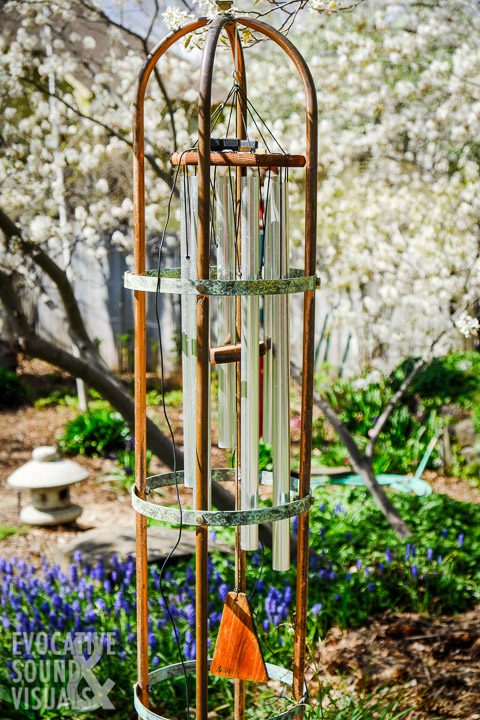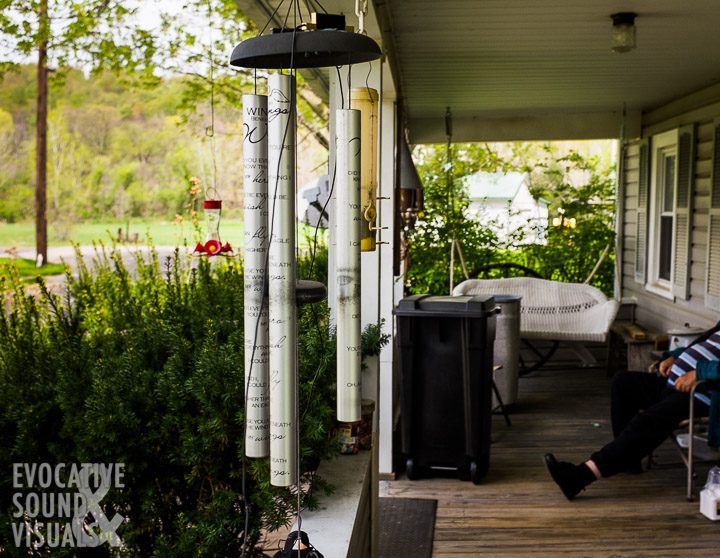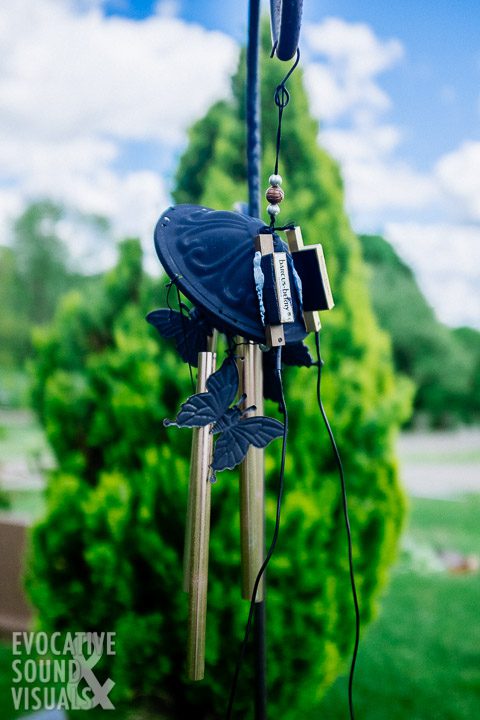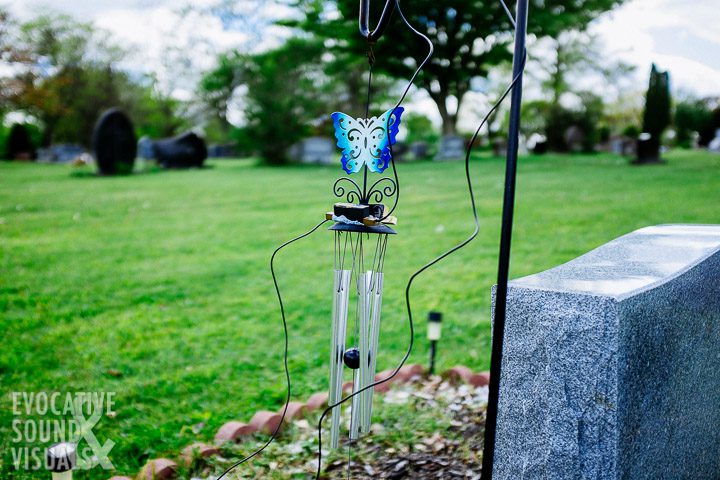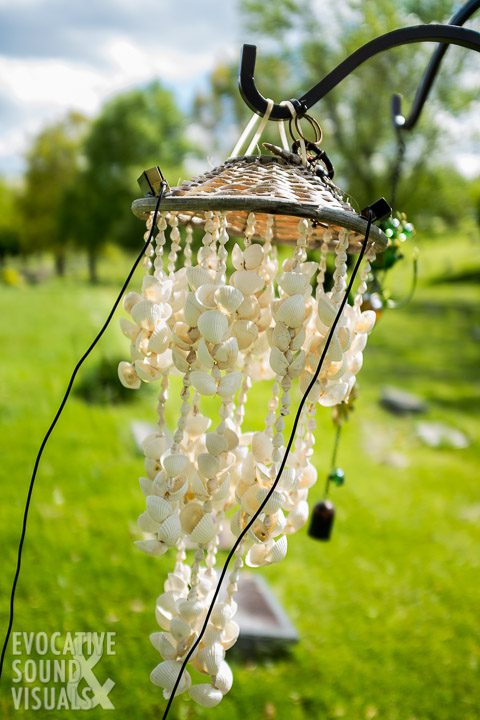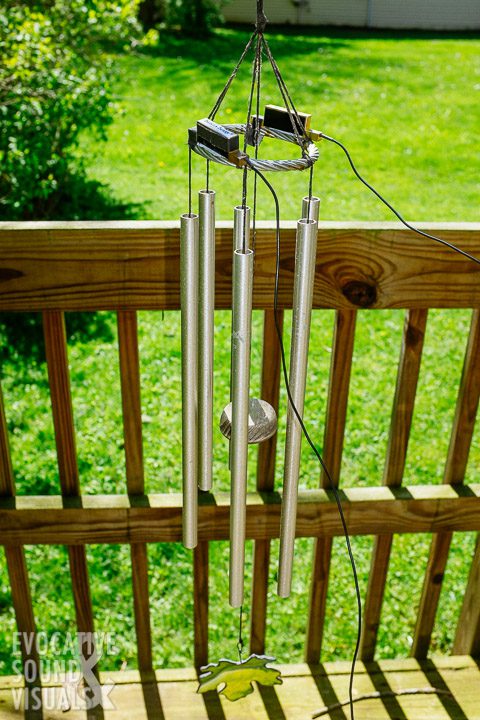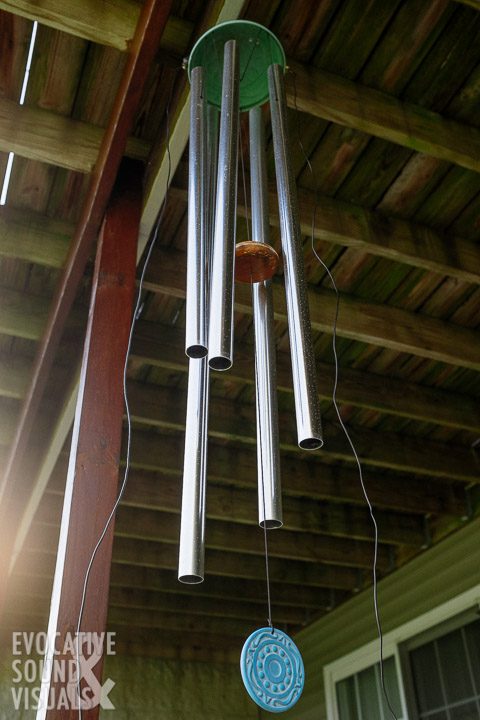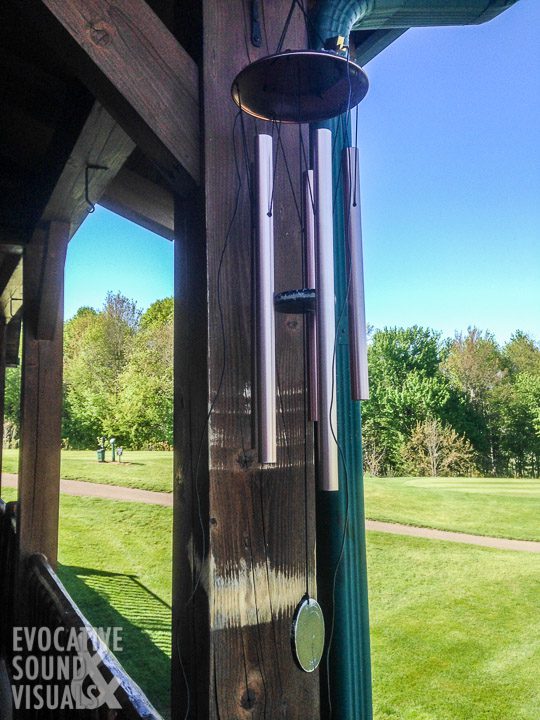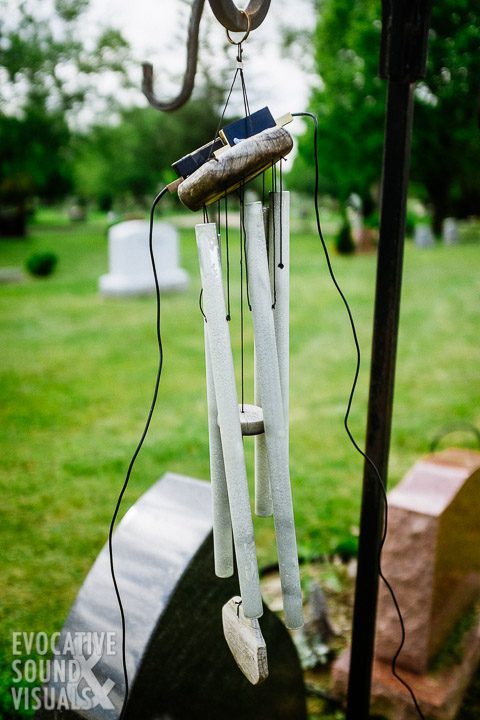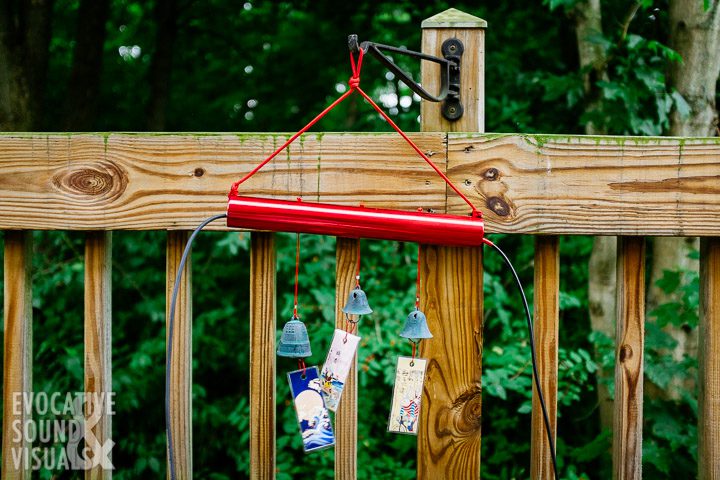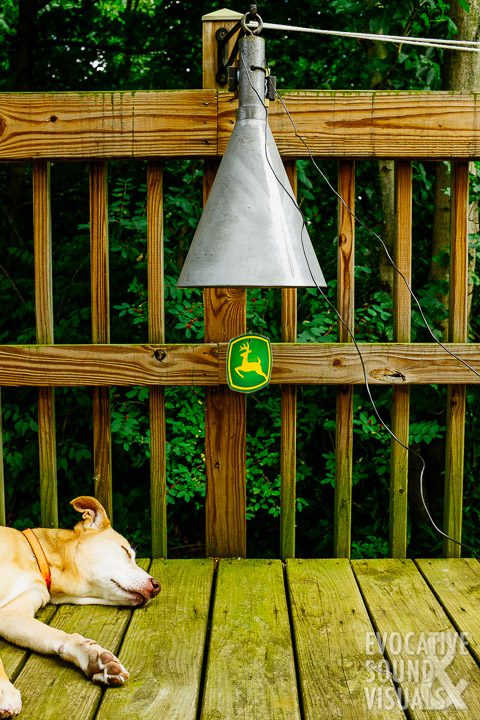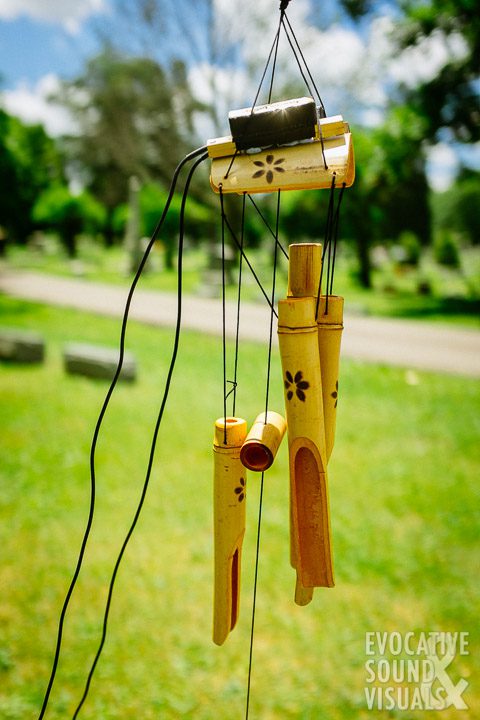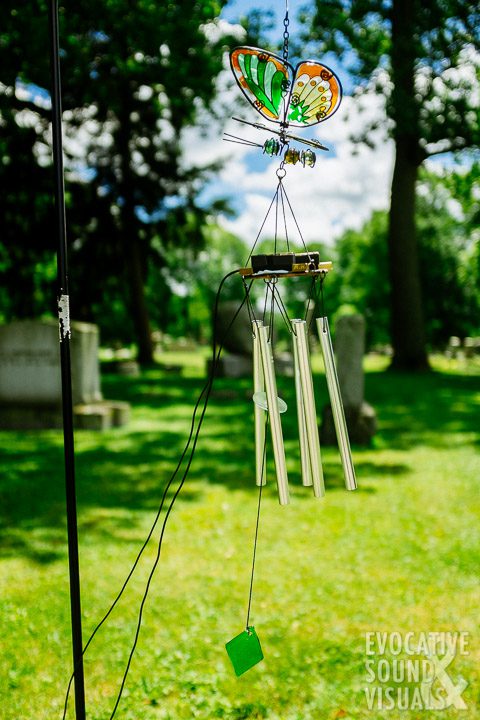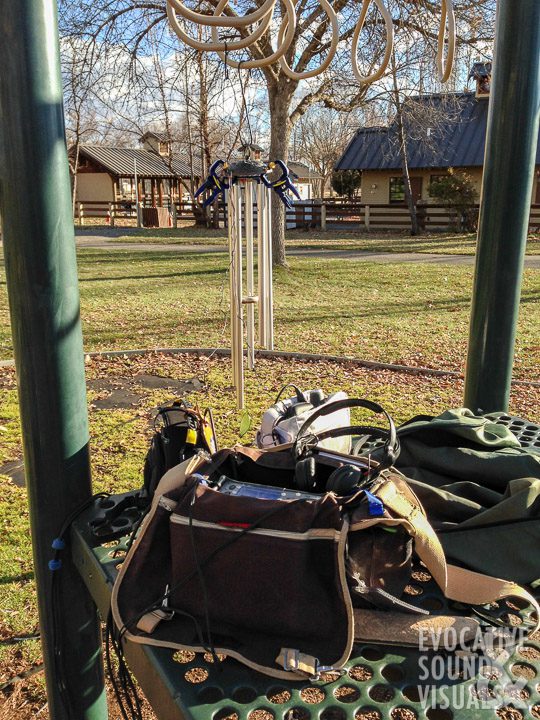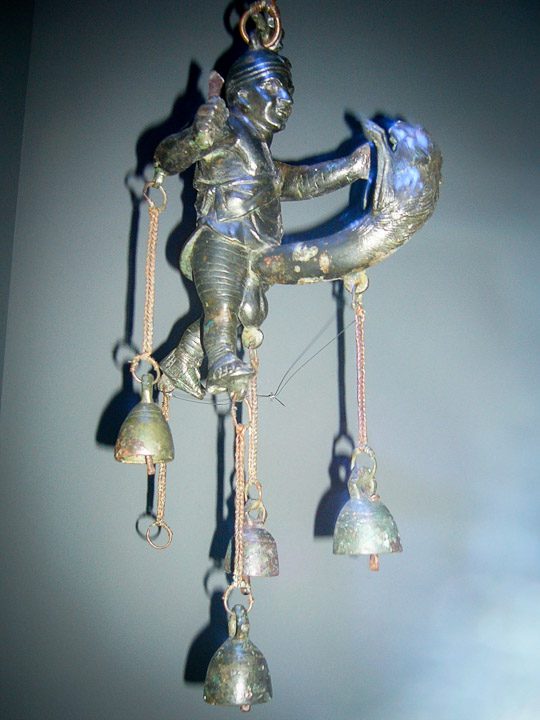Chance-Based Music Composed by the Whims of the Wind
Tinkling. Plinking. Clinking. Clanging. Rattling. I adore the sound of wind chimes blowing in a gentle breeze. My fascination with recording them began in March 2014. I was ambling through Grace Episcopal Church cemetery in St. Francisville, Louisiana weaving between pockmarked tombstones dating back to the Civil War. Spanish moss-covered limbs from sprawling live oaks form a protective blanket over the graves. I heard the faint high-pitched sound of a wind chime whispering in the distance. The closer I got, the more it sang out to me. It was a little silver lichen-covered chime, dangling from a rusty hanger, clinking over the tiny grave of 2-year-old Marshall Wayne Brewer. Engraved on his tombstone are the words ‘Our little angel.’ I sat there transfixed by the sound for probably a half-hour. I just had to capture it.
Listen to the Boy’s Wind Chime
Wind chimes have a way of conjuring up deep, contemplative thoughts. They require long-term listening and recording. For this project, I could have hung wind chimes from a garage rafter and pointed a box fan toward them. But where would the fun be in that? The allure of wind chimes is the randomness of their sound. They produce what is referred to as chance-based music.
I took a natural approach in pursuit of these unique sounds. I recorded in situ when possible. Occasionally transported wind chimes to outdoor locations judged to be relatively quiet yet semi-windy. I recorded at soccer fields and state parks. I recorded on my patio, in my sister’s yard, at a local golf course while eating a burger and on a stranger’s back deck. She had a large, awesome wind chime swaying and singing ever so nicely in the breeze. I eyed it every time I walked my dog. I knocked on her door and explained my idea. She was gracious enough to let me capture it.
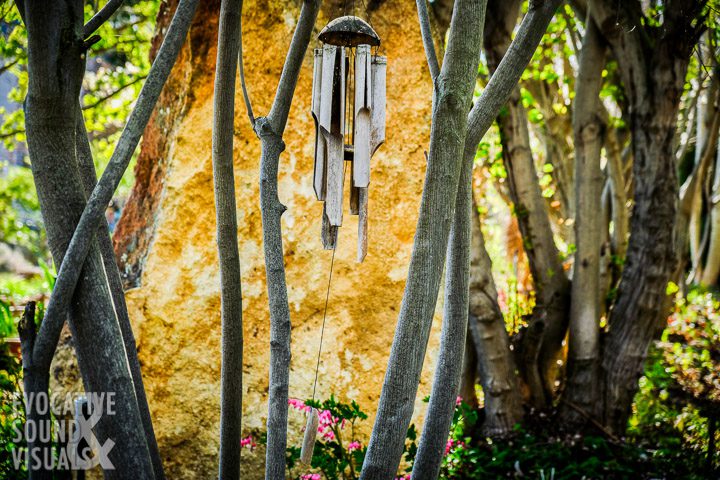
Most recently, I recorded wind chimes along a bicycle path here in Boise, Idaho. Yet for reasons mentioned earlier, my favorite recording locations were cemeteries. I sat at gravesites for hours. no one bothered me. Passersby most likely thought I was a visitor in mourning. After all, I was kneeling and looking down at my levels. Only once did someone approach. He was curious, not confrontational. One quick listen through my headphones and he understood the idea.
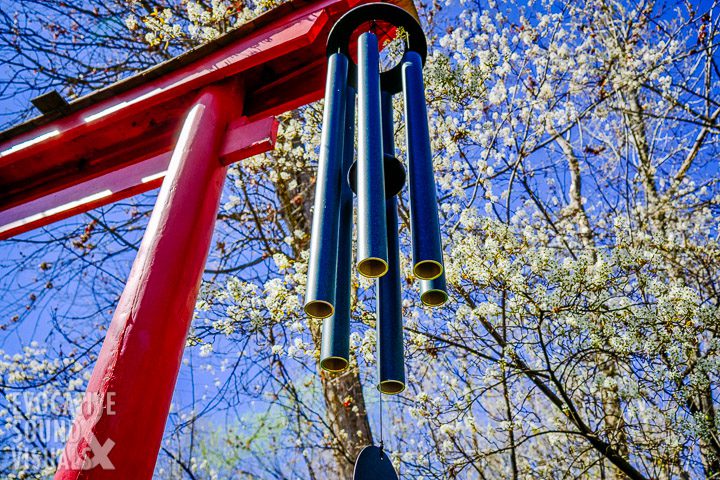
When we listen to wind chimes we may think that the melodious sound we hear is the only sound around. But microphones tell a different story. They pick up the unwanted noise of everything we tune out. Like your neighbor’s gas-powered leaf blower or incessant traffic noise. One way to get around this is to use contact microphones. These specialty microphones pick up the sonic intricacies of wind chimes in a way off-limits to our naked ears. They allow us to hear the strength of the fundamental frequencies and the gentle waverings of the harmonics that follow. To hear this level of detail, we would have to place our ears against the tubes of the chimes. If we did, however, the suspended central clapper, upon striking the tube, would produce a disappointing thud instead of a harmonious note.
As an unexpected bonus, contact mics allow us to hear the flowing air column circulating through the hollow pipes. That’s pretty awesome. When a strong wind blows, the sound can become overwhelming. But when a gentle breeze moves through, at say no more than 15 mph, the sounds are just right.
I recorded shell wind chimes, bamboo wind chimes, and of course, metal-tubed wind chimes. I captured the sound of wind chimes that resembled birdcages and wind chimes with pretty butterflies on top. I recorded homemade wind chimes made out of box graters. The sound it produces lives up to its name. I suspended three teeny tiny Japanese bells from a shiny red track baton I purchased online. It tinkles wonderfully. I captured the monotonous sound of a do-it-yourself wind chime made from a large magnesium funnel. This was used I’m told, to pour gunpowder down the barrel of old howitzer artillery pieces at Rock Island Arsenal.
Needless to say, not all the wind chimes I recorded looked or sounded showroom new. Some were rusty. Some were missing a rod or two. Some were twisted, broken, and cracked. That’s the beauty of it. They have a history. They tell a story. Like the set hanging off the porch of an old man’s house in Bellville, Ohio. Every time he heard them, he thought of his wife. They were given to him instead of flowers at her funeral.
What you’ll hear on the album are 16 different wind chimes, large and small, old and new. Some project deep harmonious tones, while others come off as tiny. Some sound beautiful. Others sound dissonant and a bit jarring. I’ll let you decide. All were recorded between 2017 and 2020 during different seasons and under various weather patterns. Each chime is staggered and layered atop one another, creating the effect of being surrounded by them. Listen closely. You’ll hear occasional birdsong, tree frogs, people talking, bicycles passing and dogs barking. And thankfully, no leaf blowers. For me, it’s all music, composed by the whims of the wind.
A big thank you goes out to all the people, alive and dead, who allowed me access to their wind chimes. They include Kathie M., Lori H., Susan M., Terry and Kay S., Sue E., Bruce S., Laura and Harold P., Debbie R., Gary M., Camille K. and others.

Further Reading, Including Wind Chimes I’d Love to Record
- The Tower of Voices, the yet-to-be-completed 93-foot-tall monument dedicated to the passengers and crew of Flight 93 who died on September 11, 2001, outside Shanksville, Pennsylvania. The tower will suspend 40 rods, one for each person killed that tragic day.
- The world’s largest tuned wind chimes are in Eureka Springs, Arkansas. According to Roadside America, the chimes are now housed indoors. I’m not sure this one is worth a visit anymore.
- Casey, Illinois boasts the world’s largest wind chimes, measuring 42 feet long and weighing nearly 17,000 pounds. Casey lives up to its ‘big things small town‘ motto. It also features the world’s largest golf tee, rocking chair, wooden shoes, pitchfork, mailbox, key, gavel, spoon, golf driver, barbershop pole and teeter-totter. I want to go there!
- A Denver installation artist builds and places wind chimes on old Frisbee golf tees and light rail bridges, all to comfort the homeless.
- This site nicely illustrates all the parts that make up a wind chime, from the ring hook at the top to the sail at the bottom.
- Interested in making your wind chimes and having them sound good, you better know advanced math. Here are two sites that may help. First, from eHow, and this one, from Wikipedia.
- The ancient Romans liked wind chimes as well. They especially enjoyed the twinkling sound their chimes, called tintinnabulum, made as the wind blew across their thresholds or in their gardens. Tintinnabulum was mobile-looking assemblages of tiny bells often suspended from many phalluses. Ancient Romans believed these often-bronze sculptures would ward off evil spirits and bring prosperity. Luckily for us, the phallus symbolism has disappeared. But in case you’re still curious, have a look at the gallery below. It’s G-rated.
Recording note: Each wind chime was recorded with a pair of Barcus Berry contact microphones, held in place by either Blu Tack or Irwin hand clamps. The mics fed into either a Sound Devices Mixpre-D/Sony PCM D100 combo or a Sound Devices 702 recorder. Each recording was originally captured at 96kHz/24-bit. The 58:20 album is CD-quality 44kHz/16-bit.


